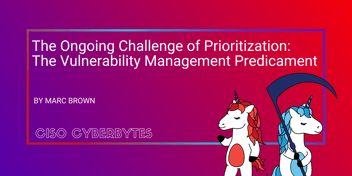The recent New York Times article, Ransomware Attack Disrupts Health Care Services in at Least Three States, shedding light on the disruptive impact of ransomware attacks on healthcare services, underscores an urgent issue that has been escalating at an alarming pace. Ransomware hackers have increasingly targeted hospitals, exploiting vulnerabilities in the healthcare sector's cybersecurity defenses. The reasons behind this disturbing trend are multifaceted: the underfunded state of cybersecurity in most healthcare organizations and the life-threatening consequences of outages that pressure these institutions to pay ransoms.
The Vulnerabilities in Healthcare Cybersecurity
Due to its perceived vulnerabilities, the healthcare industry has become a prime target for ransomware attacks. A key factor contributing to this is the underfunding of cybersecurity measures in many healthcare organizations. Unlike some sectors that have invested significantly in robust cybersecurity, the healthcare industry often operates on constrained budgets with conservative innovation timelines. This financial pressure and 24x7 operations reduce the ability to invest in state-of-the-art cybersecurity solutions quickly, leaving these institutions susceptible to cyberattacks.
In the high-stakes nature of healthcare, where downtime is not just a matter of inconvenience but a life-threatening urgency, hospitals pay ransoms when operations are disrupted. Ransomware attackers are acutely aware of this vulnerability, exploiting it at every opportunity.
Alarming Statistics
The severity of the issue is evident in the facts. Healthcare organizations globally have faced a staggering increase in cyberattacks. In 2022, these organizations experienced the highest number of ransomware attacks among critical sectors. On average, healthcare institutions faced a daunting 1,463 cyberattacks per week last year alone, marking a shocking 74% increase from the previous year. These figures underscore the relentless onslaught of cyber threats targeting the healthcare industry.
SCYTHE's Recommendations for Strengthening Cybersecurity
Given the critical situation, CISOs in the healthcare sector need to take proactive measures to safeguard their organizations. SCYTHE, as a leading advocate for improved proactive cybersecurity, recommends several crucial steps that can make a substantial difference:
- Leverage Expert Resources: The recent ransomware surge demands access to cutting-edge knowledge and resources. The IANS Faculty's latest ransomware resources offer invaluable insights, including:
- The Ransomware Prep Toolkit,
- Third-Party Ransomware,
- Incident Handling Playbook
- Architecting Your EMR to Survive a Ransomware Attack on the Enterprise Network provides actionable guidance tailored to the challenges faced by healthcare institutions.
- Adopt Comprehensive Incident Response Plans: A robust incident response plan tailored to ransomware attacks is essential. Build an Effective 5-Step IR Process for Ransomware offers a comprehensive framework that equips healthcare organizations to respond swiftly and effectively to ransomware incidents. A subscription to this resource can be instrumental in preparing for and mitigating the impact of a ransomware attack.
Addressing Broader Industry Impact
It is worth noting that other industries with mission-critical operations, such as utilities and manufacturing, are also at risk. Just like healthcare, these sectors cannot afford downtime due to the immense repercussions it can have on their operations, including:
- Financial Services: Financial institutions are vulnerable due to the valuable financial information they manage. Cybercriminals target banks, fintech companies, and other financial organizations to gain access to sensitive customer data to exploit vulnerabilities in payment systems.
- Energy and Utilities: The energy and utilities sector is at risk due to its interconnected infrastructure, including power grids and utilities. A cyber breach could disrupt energy distribution, leading to widespread service outages and compromising national security.
- Manufacturing: Manufacturing companies often rely on complex supply chains and interconnected systems. Cybercriminals can target manufacturers to gain access to manufacturing systems, causing operational disruptions and compromising competitive advantages.
- Government and Public Sector: Public service entities are attractive targets for cybercriminals seeking to exploit critical infrastructure vulnerabilities, disrupting public services.
Conclusion
The recent surge in ransomware attacks on healthcare institutions poses a grave threat to patient safety and the security of sensitive medical data. The combination of underfunded cybersecurity efforts and the life-or-death urgency of healthcare operations creates a perfect storm that ransomware attackers are exploiting. As healthcare continues to be a prime target for cybercriminals, CISOs and cybersecurity leaders in the sector must prioritize strengthening their defenses.
SCYTHE's focus on proactive security techniques, threat intelligence, expert resources, and comprehensive incident response plans can empower healthcare organizations to tackle ransomware threats effectively. By adopting these measures, the healthcare industry can work towards a future where patient safety and critical operations remain secure in the face of mounting cyber risks.
